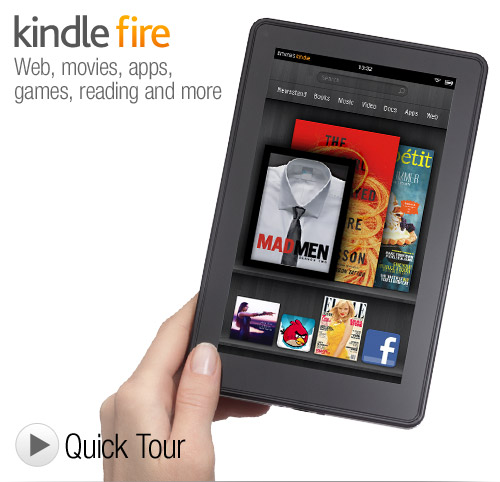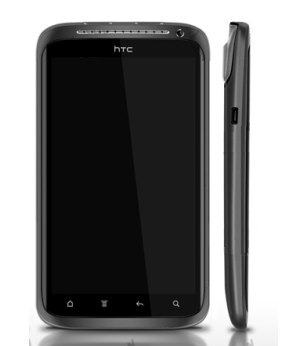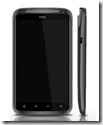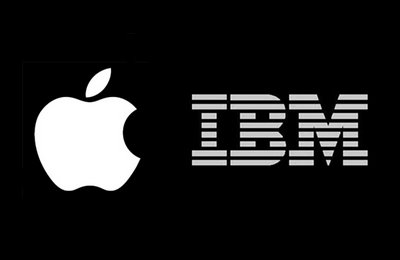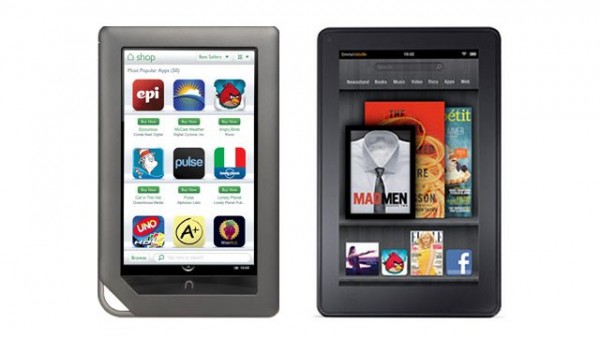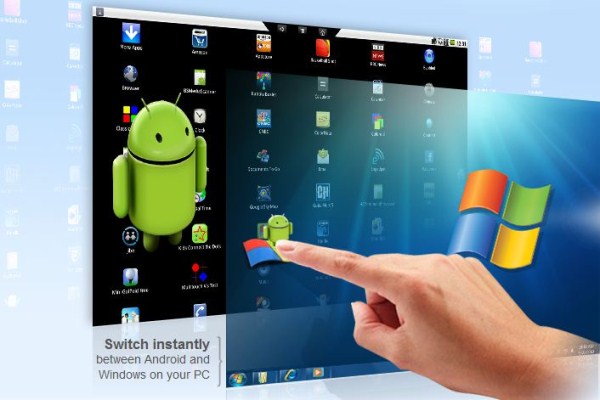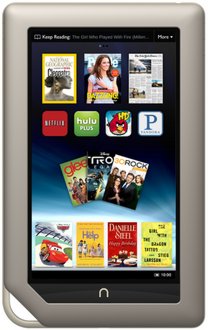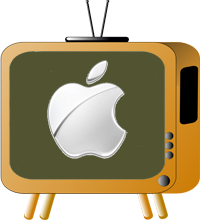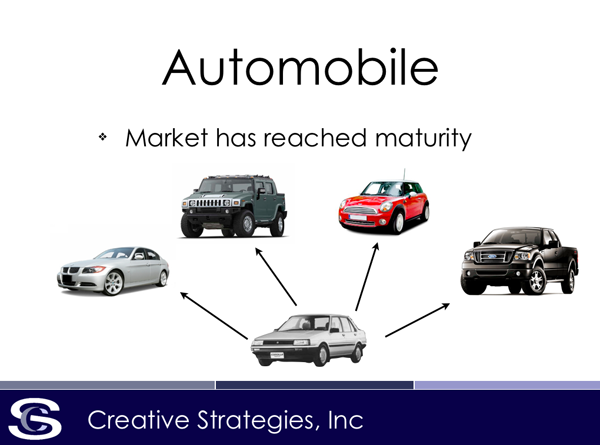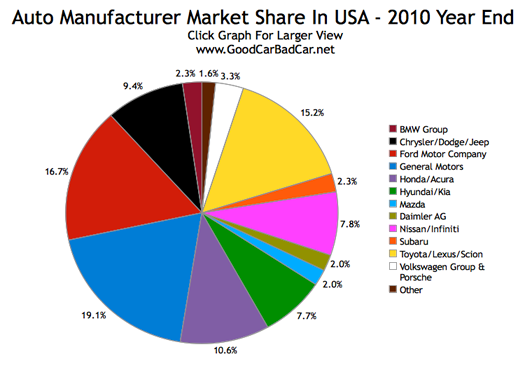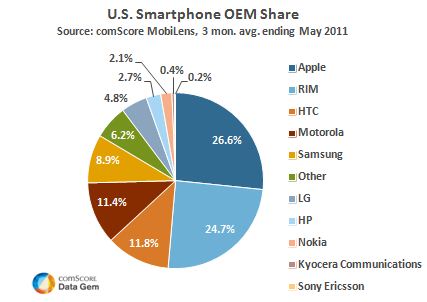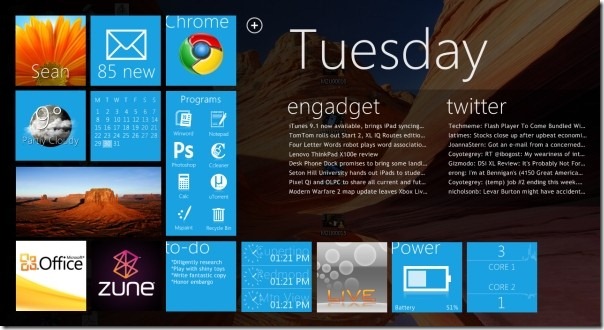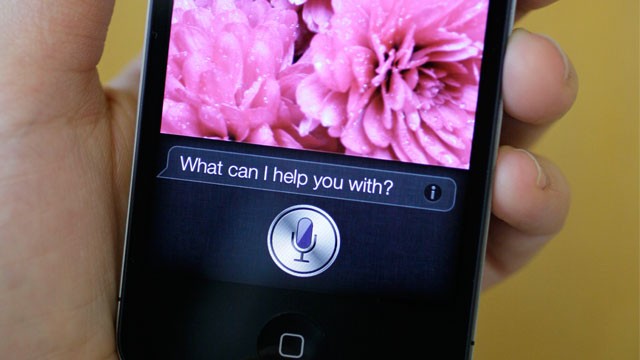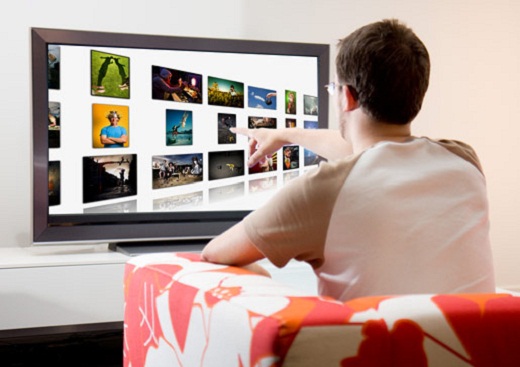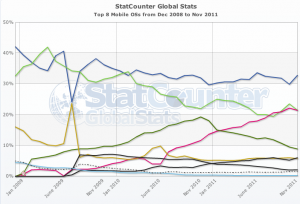I have been using the Kindle Fire for a while now and I am quite impressed with this new entry into the tablet space. Although one of Amazon’s major goals was to make this a great eBook reader, the fact that it runs on Android and can run Android apps, has a Web browser, and developers can write apps specifically for the Fire inevitably makes it a solid entry in the tablet market.
Some of my research colleagues had originally placed the Kindle Fire in the eReader category, but this does the Kindle Fire a grave injustice. This is a tablet in the full sense of the word and it will especially be competitive with Android tablets. Also, it is very clear that this is positioned only for a consumer audience. Unlike Apple’s iPad, this product would not translate well into a business markets as it stands today. A side note to this is that since it does have an LED screen, reading a page in direct sunlight is as difficult as it is on an iPad now.
I will not be doing a full review in the technical sense of the Kindle Fire as many of the gadget blogs will do that better than I could. However, before I discuss its impact on the market, I do want to point out a few things I like with the Kindle Fire and at least one thing I think would make it better in future versions.
When you pick up a Kindle Fire, the first thing you will notice is how brilliant the screens color and resolution is. It appears that Amazon spared no expense with this component. And its touch sensitivity is as good as I have seen on any of the higher end tablets on the market today. I have been using the iPad from day one and I have a personal preference for a tablet with a larger screen, but I was surprised to find how much I enjoyed reading books and perusing Web pages on this 7 inch form factor. Also, apps like Pulse worked the same as on my iPad, only in a smaller window.
But this also underscores a key issue that consumers need to think about when buying a Kindle Fire. This is really optimized for content consumption and NO content creation. When Apple introduced the iPad, they emphasized its use in content consumption. But within six months on the market, users began to find ways to optimize it for productivity and in some cases, real content creation. In fact, I often use the Zagg Bluetooth keyboard with my iPad and use it as a laptop replacement on many short trips I take. I would never consider doing something similar with the Kindle Fire.
While the Kindle Fire can run localized apps, especially downloaded games, its 6.5 gigs of actual available flash memory means you are highly limited on what can be downloaded for use when disconnected. However, when connected to a WIFI network, the Kindle Fire really shines. You can watch streamed video, stream music in real-time and gain access to apps with Web content.
One small gripe I have is where they locate the on/off switch. It is on the bottom of the device and is awkward to turn on and off in this position. On the next model I hope they put it on the side where it would be easier to access.
The Kindle Fire is the best of the 7-inch tablets bar none. The Android tablet vendors should be very concerned. At $199 Amazon is most likely taking a loss on each product but making it up when people buy books and other products in the Amazon ecosystem.
These devices tied-to-distinct eco-systems underscores another truism that I believe will drive market demand for tablets and other types of digital devices in the future. In fact, I’m not sure that there is an actual tablet market. Rather, the actual revolution-taking place in our tech industry is that the real market drivers going forward will be for broad ecosystems of apps and services that are optimized for various devices, one of which is a tablet, that can be plugged into this ecosystem and are designed to work especially well with these devices.
If you have used multiple Apple devices, such as the iPod, iPhone and iPad, this should have become obvious already. While you may be attracted to Apple’s cool looking products, they are really front ends to a rich ecosystem of apps and services that are designed to work extremely well with these dedicated Apple devices.
The iPod, iPhone and iPad are important vehicles designed to work perfectly with Apple’s ecosystem. And now, Amazon’s Kindle Fire is their first real hardware play that follows in Apple’s footsteps. Using this logic, I believe that Amazon will someday create other devices optimized to fully tap into their ecosystem such as a 10 inch tablet, perhaps a Netbook or UltraBook or even a smart phone. Keep in mind, this is not that big a stretch in thinking. If Amazon is smart, they find ways to drive more people to their ecosystem with optimized devices and expand their growth and fortunes in the same way Apple is doing with their device and ecosystem strategy.
Interestingly, although it uses Android, this is not an Android ecosystem they are tapping into. This is an Amazon walled garden that just happens to be on top of Android. And from this point on, it is their hardware, their software, apps and services they will build on. I once thought that Amazon did not want to be in the hardware business and really wanted to just get more vendors backing their ecosystem. But just like Apple, I believe they now realize that the idea of letting others take advantage of their ecosystem would be foolish. Instead, I believe they will build up their hardware prowess and use this as a key way to lock or tie their customers to a total hardware, software and solutions strategy going forward. And, I firmly believe that in the very near future, people will be buying into ecosystems of hardware, software and services, not devices, especially ones that are not optimized to work well with specific rich ecosystems.
So how will the Amazon Kindle Fire affect the market for Tablets?
As I stated earlier, it will have a major impact on Android tablet vendors. At the very least they will be forced to try and get their devices into Amazon’s price range. However, Amazon’s ecosystem is a key part of the Fire’s draw and in that sense, it leaves most of the Android competitors out in the cold. Yes, these competitors can tap into the Android world of apps, but they are still fighting Google on version provisioning as well having to work with an app store that is not curated. Also, most of the Android tablets coming to market are all the same, while Amazon differentiates through their eco system.
As for Windows 8 tablets, our current view is that these will be targeted more towards business customers. But unless Microsoft develops a rich ecosystem of their own for the Windows 8 world, Amazon and Apple will always have an edge.
As for competing with Apple, the Kindle Fire is not a threat at all to Apple’s iPad in business. To date, this is still the market leader and it won’t get any serious competition, especially from the Windows 8 camp, until at least Oct of 2012.
But at the consumer level, the Kindle Fire is clearly going to be a competitor to the iPad in the sense that it is going after a consumer audience. And at $199.00 it gives the consumers a serious option in tablets for use for content consumption.
I also believe that it could force Apple to bring the price of the iPad down faster than they had planned.
But there are three key things to consider when comparing the Kindle Fire against the iPad. I see Apple’s iPad as representing the top end of the market for tablets and one that is becoming a cross functioning device. That means it is good for content creation and great for content consumption. And with its 9.6 inch screen and over 140K apps written just for the iPad, even with its pricing today, it is and will continue to be a market leader in tablets. And I believe they will still sell 15+ Million per quarter at least through 2012.
And while the Kindle Fire is aimed at the same consumer audience, Amazon will need to enhance their eco system consistently if they plan to really compete with the iPad in the future. Also, its 7-inch screen and form factor may be a drawback to some who really do want a larger screen in their tablet. But that said, the Kindle Fire will be a huge hit for Amazon and I would not be surprised to see them sell close to 4 million during the holiday quarter.
The second thing to consider is that there is a very large audience who are OK with what I call “good enough” tablets. While many consumers may still be lusting after and iPad, its current price remains a drawback for some. And while the Kindle Fire is smaller than the iPad and has less in the way of apps and even services, it will be good enough to many and serve as their first real entry into the world of tablets.
The third thing to remember is that the tablet market is in its infancy and I believe could eventually be bigger than the PC market. Key reason is the ultimate portability of the tablet and as we get more ubiquitous connections, this will be an ideal form factor for millions of people who want a device with a larger screen then their smartphone with them when they leave the house or hit the road.
Just as the iPad became the major disruptor in mobile computing, I expect the Kindle Fire to set the tone for low-cost tablet devices and be the leader in this price category for quite a while thanks to the Kindle Fire’s high quality design that is tied directly to an Amazon Eco system of software, apps and services.
